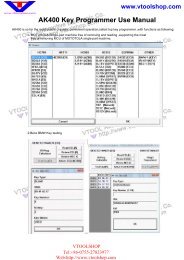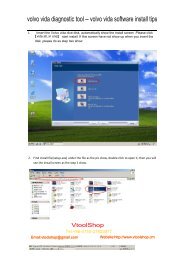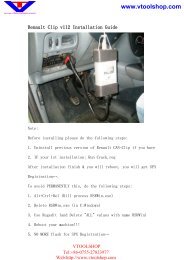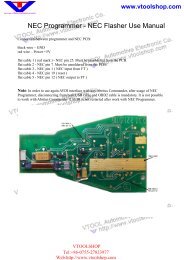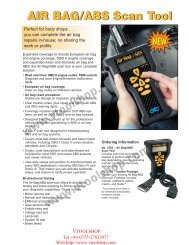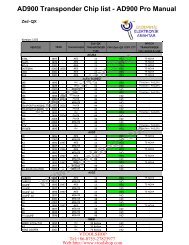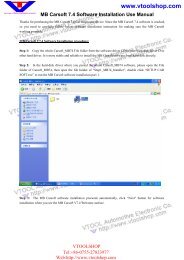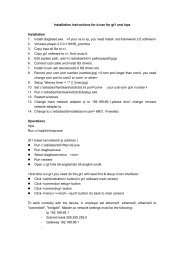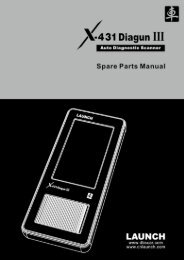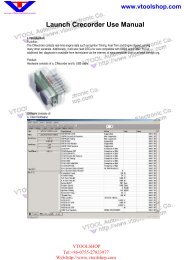GS400 OBDII Scan Tool Manual.pdf - Car diagnostic tool
GS400 OBDII Scan Tool Manual.pdf - Car diagnostic tool
GS400 OBDII Scan Tool Manual.pdf - Car diagnostic tool
You also want an ePaper? Increase the reach of your titles
YUMPU automatically turns print PDFs into web optimized ePapers that Google loves.
2.6 OBD II Definitions<br />
Powertrain Control Module (PCM) -- OBD II terminology for the onboard<br />
computer that controls engine and drive train.<br />
Malfunction Indicator Light (MIL) -- Malfunction Indicator Light<br />
(Service Engine Soon, Check Engine) is a term used for the light on the<br />
instrument panel. It is to alert the driver and/or the repair technician that<br />
there is a problem with one or more of vehicle's systems and may cause<br />
emissions to exceed federal standards. If the MIL illuminates with a<br />
steady light, it indicates that a problem has been detected and the vehicle<br />
should be serviced as soon as possible. Under certain conditions, the<br />
dashboard light will blink or flash. This indicates a severe problem and<br />
flashing is intended to discourage vehicle operation. The vehicle<br />
onboard <strong>diagnostic</strong> system can not turn the MIL off until the necessary<br />
repairs are completed or the condition no longer exists.<br />
DTC -- Diagnostic Trouble Codes (DTC) that identify which section of<br />
the emission control system has malfunctioned.<br />
Enabling Criteria -- Also termed Enabling Conditions. They are the<br />
vehicle-specific events or conditions that must occur within the engine<br />
before the various monitors will set, or run. Some monitors require the<br />
vehicle to follow a prescribed “drive cycle” routine as part of the<br />
enabling criteria. Drive cycles vary among vehicles and for each monitor<br />
in any particular vehicle.<br />
OBD II Drive Cycle -- A specific mode of vehicle operation that<br />
provides conditions required to set all the readiness monitors applicable<br />
to the vehicle to the “ready” condition. The purpose of completing an<br />
OBD II drive cycle is to force the vehicle to run its onboard <strong>diagnostic</strong>s.<br />
Some form of a drive cycle needs to be performed after DTCs have been<br />
erased from the PCM’s memory or after the battery has been<br />
disconnected. Running through a vehicle’s complete drive cycle will<br />
“set” the readiness monitors so that future faults can be detected. Drive<br />
cycles vary depending on the vehicle and the monitor that needs to be<br />
reset. For vehicle specific drive cycle, consult the vehicle’s Owner’s<br />
<strong>Manual</strong>.<br />
7



